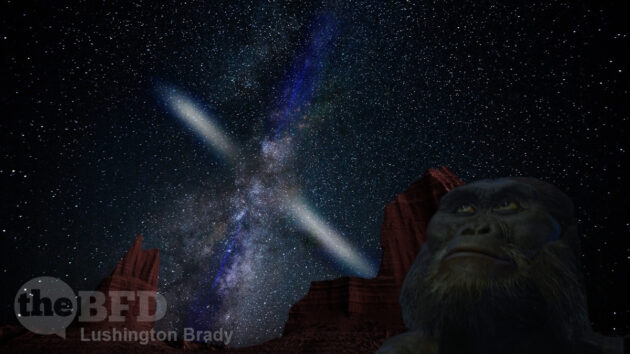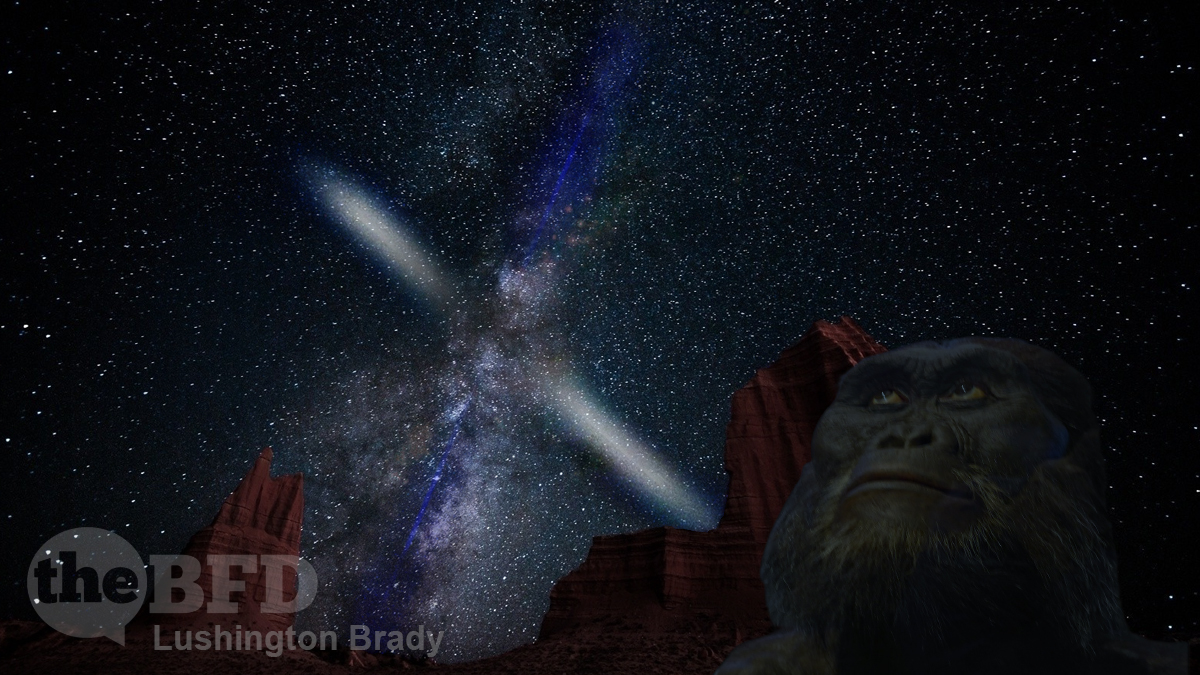According to Douglas Adams, we humans live “far out in the uncharted backwaters of the unfashionable end of the Western spiral arm of the galaxy”. But, while life is a bit quiet out here in the galactic ‘burbs, there’s plenty of stellar action going on in the galactic inner-city.
Approximately 3.5 million years ago, the centre of our Milky Way was the scene of a huge explosion which lasted for a relatively brief 300,000 years[…]
The flare from the explosion was so powerful that it affected the Magellanic Stream — a stream of gas trailing behind the Large and Small Magellanic Clouds as they orbit each other and orbit around the Milky Way — which was 200,000 light years away.
It was also so powerful it could only have come from one thing: the supermassive black hole today lying dormant in the middle of our galaxy, Sagittarius A*.
While black holes themselves are, well, black, they are surrounded by bright accretion discs. What happens is that, as matter falls into the black hole, it whirls around like water going down a plug. Accretion discs rotate so fast that they generate enormous “winds” of gases and particles and beams of ionising radiation.
Occasionally, very large quantities of matter, like neutron stars, are swallowed by a black hole, generating enormous “burps” of radiation.
It’s these beams of radiation that would have reached the Magellanic Stream, heating up the gas to much higher temperatures, sort of like the way the Sun heats up fog on a cold morning.
Professor Joss Bland-Hawthorn first came across evidence of this explosion in 2003, when he published a paper about giant X-ray bubbles that were so big they covered the entire sky, coming out of the galactic centre.
Seven years later, NASA discovered the same bubbles in the more powerful gamma rays.
“The gamma ray detection was very important because it meant this explosion was so powerful,” Professor Bland-Hawthorn said.
“It’s the difference between seeing a hand grenade and an atomic bomb go off.”
By examining the temperature signals of gases in the Magellanic Stream, scientists are able to estimate how long ago the explosion happened, in much the same way as we might guess how long ago a kettle was boiled by feeling it.
That explosion occurred about 3.5 million years ago. This means that our ape-like forebears would have been treated to an amazing sight.

“In the lifetime of Australopithecus afarensis, cave people that were in Africa at the time, if they’d… looked up towards the Milky Way, they would have seen these giant cones beaming out from the galactic centre,” Professor Bland-Hawthorn said.
In 2019, astronomers observed a bright flare in the galactic centre. The galactic core briefly flashed 100 times brighter than normal.
That was a tiddler compared to what happened 3.5 million years ago.
Comparing the two would be like comparing a burp to a projectile vomit[…]
This wouldn’t have been the first time the centre of our Milky Way exploded and it won’t be the last.
“This has been going on for billion of years, flicking on and off, no question,” Professor Bland-Hawthorn said.
There may have even been a more recent explosion in the centre of our galaxy that we haven’t detected yet.
ABC Australia
What all this means is that our galaxy is not quite as boring as might have been thought. And what happens in the galactic inner-city can have big flow-on effects in the suburbs. The Magellanic Stream is really out in the boonies – and if that is still showing the effects of a really big galactic core event a few million years ago, it suggests that such explosions would have had profound effects on life right across the galaxy.
Please share this article so that others can discover The BFD

